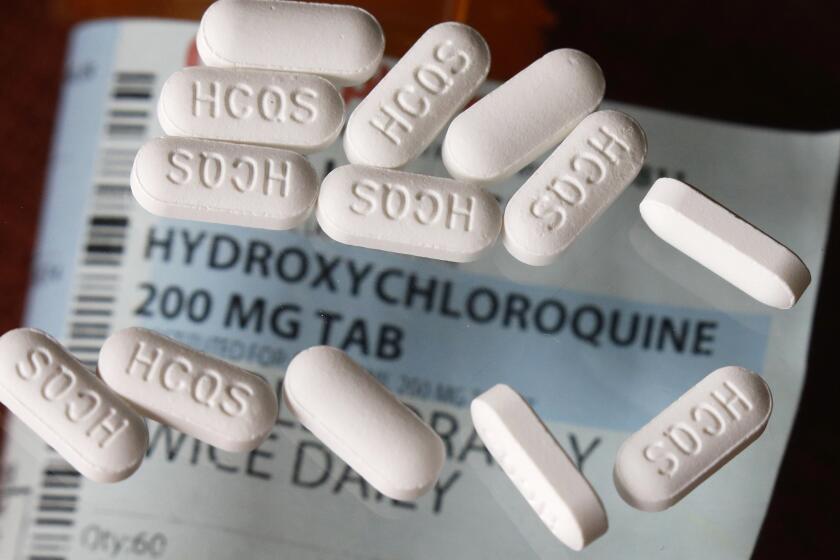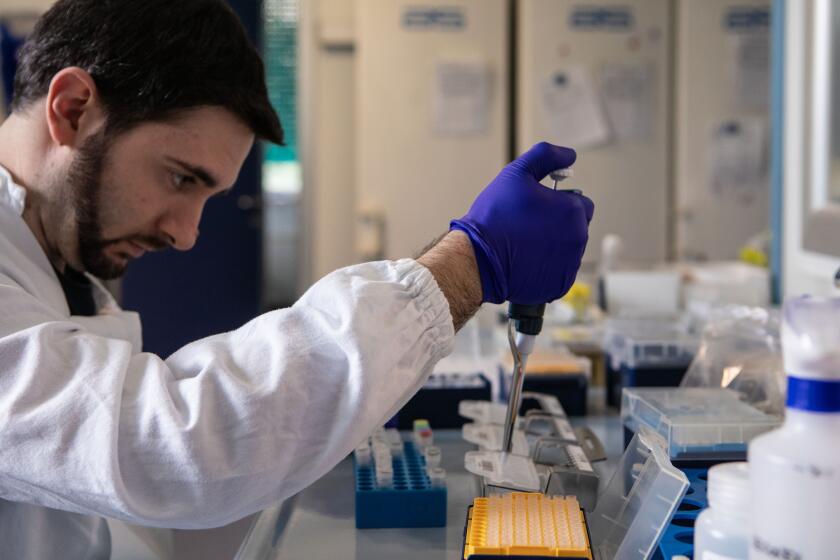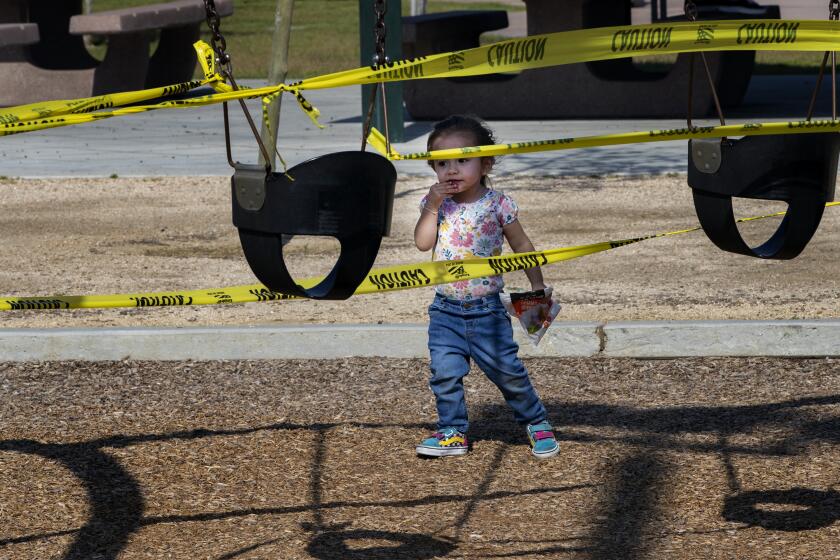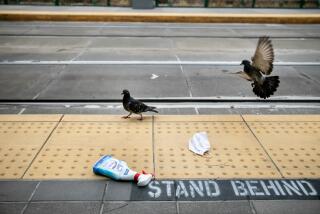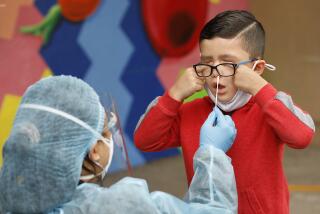Here’s what scientists still wish they knew about the coronavirus
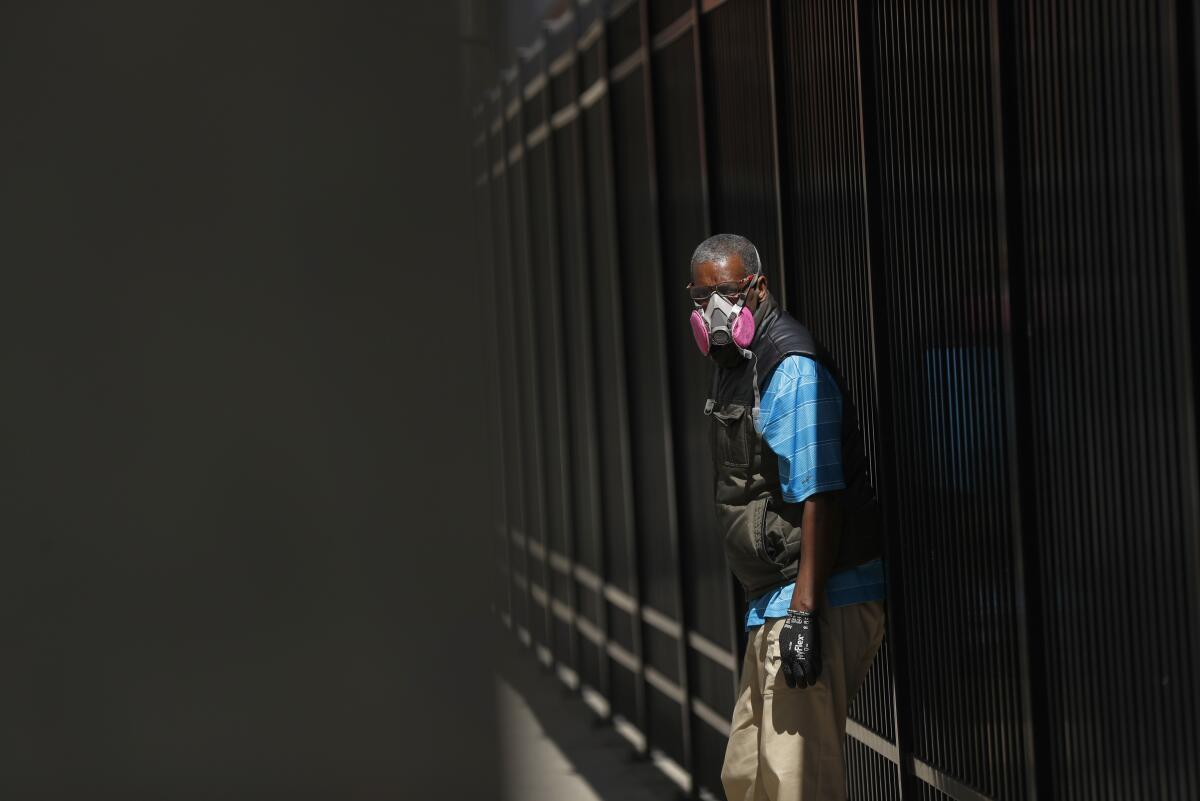
With some states getting ready to lift their stay-at-home orders and relax their social distancing measures, it may seem that health officials have the coronavirus outbreak under control.
But researchers say there’s still much they don’t know about the virus — and the answers to their questions could help determine when it will be safe for life to return to normal.
The mysteries scientists are most eager to solve have shifted somewhat since this coronavirus began sickening people in Wuhan, China, in late 2019. Instead of learning more about its origins and predicting how widely it might spread, the priority now for many researchers is to find ways to treat those who are sick and protect those who aren’t.
The Times spoke with several scientists to find out which issues are at the top of their minds as they work to understand the coronavirus and COVID-19, the disease it causes.
Which treatments actually work?
Doctors have tried a variety of drugs, including medicines developed to treat malaria, autoimmune diseases and Ebola. Despite high hopes for some of them, so far none has been proven to be a silver bullet.
The National Institutes of Health released its first set of treatment guidelines for COVID-19 on Tuesday, warning healthcare providers to exercise caution with their patients. The Food and Drug Administration has not yet approved any medicines to treat the new disease, and the jury is still out on potential treatments such as the Ebola drug remdesivir, which is still being tested in clinical trials.
For now, the agency isn’t giving advice on the malaria drug chloroquine or several drugs of high interest, many of which are undergoing clinical trials.
However, the agency does recommend that clinicians avoid using hydroxychloroquine in combination with the antibiotic azythromycin, in part because of its potential to cause erratic heart rhythms. It also frowns on the combination of the HIV drugs lopinavir and ritonavir, which is sold under the brand name Kaletra.
The NIH also discouraged the use of other classes of drugs, including interferons, Janus kinase inhibitors, ACE inhibitors and angiotensin receptor blockers (although COVID-19 patients can have the latter two if they were already taking them for other conditions such as cardiovascular disease). Systemic corticosteroids should be avoided for most hospitalized patients who are not critically ill, according to the new guidelines, which will be updated as more data become available.
“Definitive clinical trial data are needed to identify optimal treatments for this disease,” an expert panel convened by the NIH wrote.
Hydroxychloroquine, the drug President Trump hailed as a coronavirus killer, had no beneficial effect for COVID-19 patients in two controlled trials.
One of the quickest ways to speed treatments to patients is to test drugs that have already been through safety testing in the context of another disease. Among others, researchers are trying anticoagulation medicines because they may mitigate the blood clotting experienced by some critically ill COVID-19 patients.
Drugs aren’t the only treatment options on the table, said Dr. Kathryn Stephenson, who runs the clinical trial unit at Beth Israel Deaconess Medical Center’s Center for Virology and Vaccine Research. There’s a deceptively straightforward technique being tried called proning, in which clinicians turn patients onto their stomachs. This appears to help drain the lungs and improve patients’ oxygen levels. (The NIH panel recommends this practice for certain COVID-19 patients on mechanical ventilators who have refractory hypoxemia.)
Sorting through the mass of information being produced on these treatments, and determining which results are reliable, will be a big challenge moving forward, researchers said.
“People are trying lots of different things,” Stephenson said. “We’re all struggling right now with what of these treatments, if any of them, actually work.”
Which antibodies confer immunity, and how many do you need?
Tests that can reliably identify people who have been infected with the coronavirus are needed to determine how many people may have developed immunity, which in turn will help guide decisions on when and how the economy can be reopened and people can resume their normal, daily lives.
Serology tests look for antibodies — specialized biomolecules made by the body in response to infection by a particular pathogen — in samples of blood serum.
The next testing challenge in the coronavirus pandemic is to diagnose those who were infected and then recovered. They are the ones with COVID-19 immunity.
The problem is that not all antibodies are neutralizing antibodies that attach to the surface of a viral particle and prevent it from attacking the body’s cells, said Dr. George Rutherford, an epidemiologist at UC San Francisco. On top of that, scientists aren’t completely sure which antibodies are connected to a protective immune response for this particular virus.
That’s a key metric for creating vaccines, he pointed out.
“Vaccines need to produce neutralizing antibody, and the neutralizing antibodies have to protect against reinfection,” Rutherford said. “So I think that goes right to the top of my list of scientific questions.”
Stephenson agreed.
“Many of these blood tests are proposed as a way to detect who is immune and ready to go back to work,” she said. “But we don’t know how to interpret those levels yet.”
It’s also unclear what concentration of antibodies is needed to actually confer immunity, Stephenson said. It’s possible that a low level might not protect as well as a high level. Either way, scientists need to know how much a vaccine will need to trigger the body to produce in order to be effective.
Determining what antibody level defends against the virus is also important to researchers investigating a treatment known as convalescent plasma. The hypothesis is that antibodies in the blood fluids of COVID-19 survivors can be transfused to patients to help them fight an active infection. (Preliminary study results are promising.)
But if different survivors have different levels of antibodies in their blood, the plasma from one former COVID-19 patient may not be as effective as plasma from another, Stephenson said.
Who is immune, and for how long?
We don’t just need to know which antibodies confer immunity, said Yonatan Grad, an infectious disease epidemiologist at Harvard University. Scientists also need to figure out which COVID-19 survivors have high levels of immunity and how long that protection lasts.
For example, do people who have mild symptoms or no symptoms develop an immune response that’s as strong and as durable as people who weathered more severe infections? If not, what’s the range of immune response? Does age influence a survivor’s immune protection? What other factors may be at play?
Answering these questions will help illuminate the extent of immune protection different communities have — and what a potential reopening of the economy might look like, researchers said.
Which mitigation strategies are actually working?
Public health officials and policymakers have instituted all kinds of policies to slow the spread of COVID-19 and help “flatten the curve.” They’ve closed schools, shuttered nonessential businesses, ordered residents to remain indoors and advised them to wear masks and observe social distancing rules if they absolutely must venture out.
Governors around the country are developing plans to lift some of these restrictions. The problem is that we don’t yet know which of them are actually working and whether any of them can be safely relaxed, Grad said.
The coronavirus changed our lives. Health experts discuss how we might get back to normal.
“Which social-distancing efforts have actually been effective in flattening the curve?” Grad said. “Does it require the most stringent of these mitigation efforts — that everyone try to stay at home as much as possible — or does having kids go to school matter?”
Keep in mind that each community experiences the outbreak in a different way, Grad said. There are many reasons for this, including different starting times and different contact patterns among members of those communities.
“This pandemic is made of many very local epidemics,” he said.
Yvonne Maldonado, an infectious disease epidemiologist at Stanford University, agreed.
“If you take away ‘shelter at home,’ what do you leave in its place?” she said.
